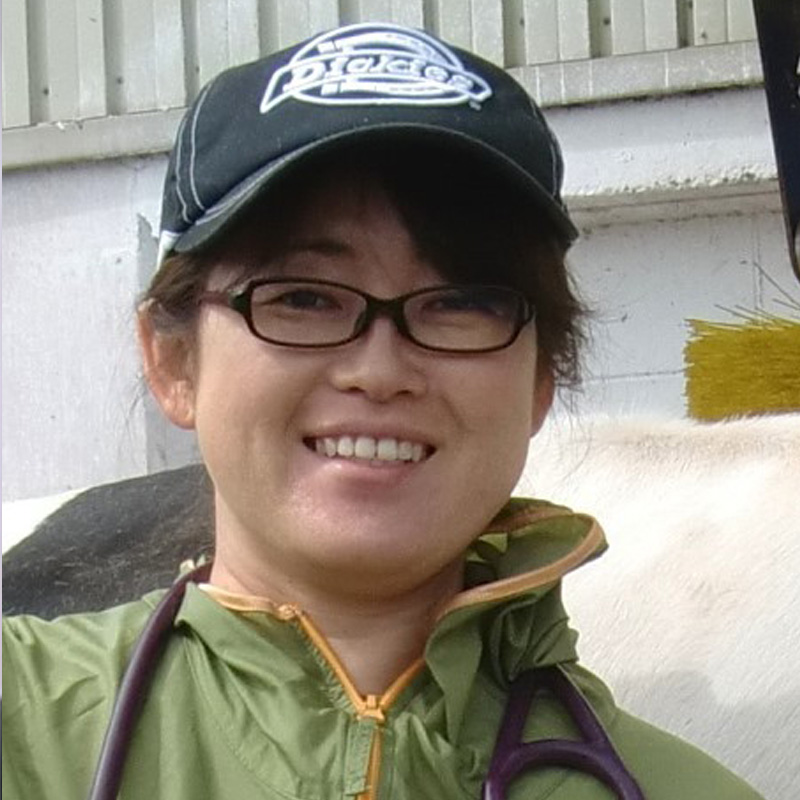Staff
ITOH Megumi
Associate Professor
Theme
To develop a herd management system estimating blood calcium by electrocardiogram waveform, and to contribute to early diagnosis and treatment of hypocalcemia before and after parturitionBelongs
Research Department, Department of Veterinary Medicine, Division of Clinical Veterinary Medicine, Section of Large Animal Clinical Sciences
Veterinary Medical Center, Large Animal Clinic
Agritech and Livestock Innovation Hub, Animal Production Research Promotion Division
Faculty (Unit)
| Field of research | Large animal clinic, Prevention in production disease, Bio-information |
| Keyword | Cow, Milk fever, Blood calcium, Electrocardiogram, Wireless, Crowd |
Introduction
Dairy cows start to lactate after delivery, but since calcium (Ca) is secreted into milk in large amounts, the blood concentration of Ca is prone to decreases. Since hypocalcemia reduces muscle contraction, it can cause decreases in gastrointestinal motility and an inability for the mother to stand immediately after delivery. In Hokkaido, these symptoms appear in 40,000 dairy cows annually, with 4,000 of them dying. Decreases in blood Ca concentration also affect the contractions of the heart. So, when the blood Ca concentration decreases, the electrocardiogram waveform changes. Based on these facts, we've developed a system that estimates blood Ca concentration from electrocardiogram waveforms (photo: the blood Ca concentration analysis system).
Currently, sensors are placed on cows for round-the-clock monitoring to establish a system that sends data to farmers and veterinarians when the blood Ca concentration of any cow falls. By monitoring the blood Ca concentration of dairy cattle around the clock before and after parturition, it's possible to detect hypocalcemia and to provide treatment at the early stage. We believe that the system can mitigate the problem of hypocalcemic cattle for farmers.
| Related industries | Veterinary medicine, Animal husbandry, Animal hygiene, Bionics |
| Affiliated academic society | the Japanese Society of Veterinary Science, Japan Veterinary Medical Association, Large Animal Clinic Research Association |
| Editorial Board |
|
| Academic degree | D. Vet. |
| License | Veterinarian |
| Room address | Large Animal Hospital and Clinical Research Building |



